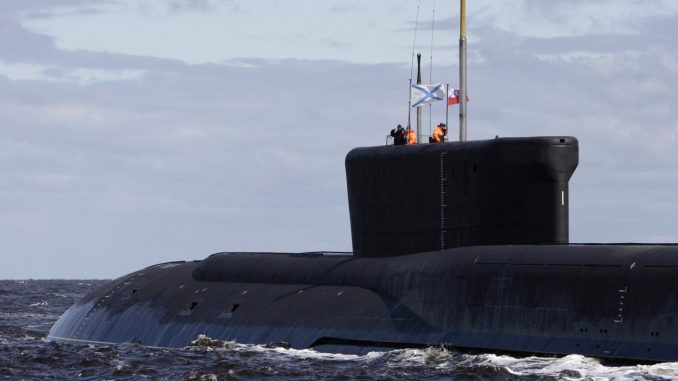
Russia is in possession of an underwater nuclear drone capable of carrying a 100-megaton nuclear warhead, a recently leaked draft of the Pentagon’s Nuclear Posture Review confirmed.
The weapon, referred to in the document as an “AUV,” or autonomous underwater vehicle, is featured in a chart that lays out Russia’s multiple nuclear delivery vehicles.
Pentagon officials warn in the posture review that Russia has actively diversified its nuclear capabilities, a strategic advantage it has over the United States
In addition to modernizing ‘legacy’ Soviet nuclear systems, Russia is developing and deploying new nuclear warheads and launchers. These efforts include multiple upgrades for every leg of the Russian nuclear triad of strategic bombers, sea-based missiles and land-based missiles. Russia is also developing at least two new intercontinental range systems, a hypersonic glide vehicle and a new intercontinental, nuclear-armed undersea autonomous torpedo.
The draft of the posture review was obtained and published by the Huffington Post.
In a statement, the Pentagon did not deny that the draft is authentic:
Our discussion has been robust and several draft have been written. However, the Nuclear Posture Review has not been completed and will ultimately be reviewed and approved by the President and the Secretary of Defense. As a general practice, we do not discuss pre-decisional, draft copies of strategies and reviews.
As outlined by Valerie Insinna of Defense News, the Russian undersea drone, officially known as Ocean Multipurpose System Status-6 and nicknamed “Kanyon” by the Pentagon, was reportedly tested in Nov. 2016. It was launched from a Sarov-class submarine used to test and validate new tech, as reported by the Washington Free Beacon reported in Dec. 2016, citing unnamed Pentagon sources.
The Pentagon had not publicly confirmed the existence of Status-6 prior to Huffington Post’s report on this year’s posture review.
According to Russian media outlets cited by the Washington Bureau, Status-6 has a range of 6,200 miles, a top speed in excess of 56 knots and can descend to depths of 3,280 feet below sea level. It was built by Rubin Design Bureau, the largest submarine manufacturer in Russia. It was designed to be launched from at least two different classes of nuclear submarines, including the Oscar-class, which can carry four Status-6 drones at a time.
The nuclear posture review reaffirms the need for a full nuclear triad, or a full range of air, sea, and ground-based nuclear missiles. But, as noted by Defense News, the review offers “no sign that the Pentagon is interested in developing unmanned undersea vehicles capable of delivering a nuclear weapon.”
The leaked posture review draft made headlines for confirming what many in the nuclear industry suspected for months: The Trump administration is vying to substantially increase the U.S.’s nuclear stockpile. The review also illustrates how the Pentagon plans to match some of Russia’s new nuclear capabilities.
Fears of nuclear war have risen to historic levels, in large part due to the verbal back-and-forth between Trump and Kim Jong-Un of North Korea. Those fears percolated on Saturday after an emergency alert was mistakenly sent in Hawaii, warning residents to “seek immediate shelter” from a ballistic missile threat.
| [adrotate group=”4″] |
[adrotate banner=”24″]

[pt_view id=”517b65fj16″]


Be the first to comment